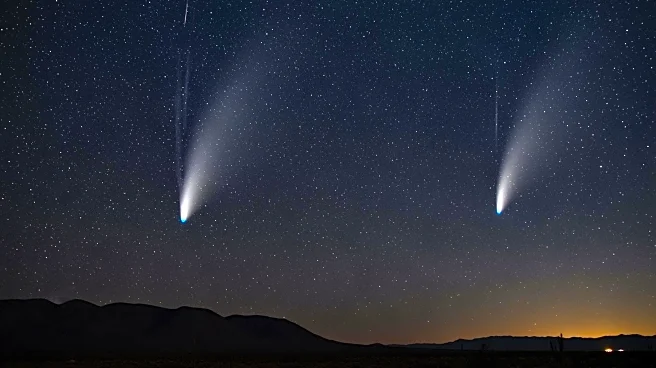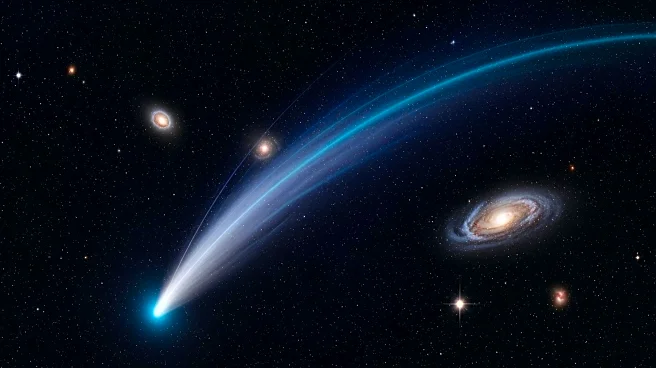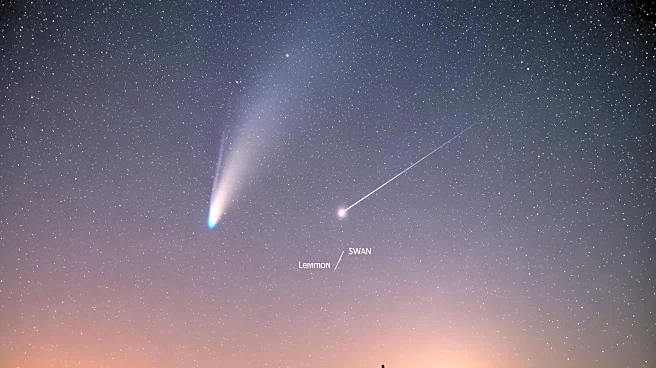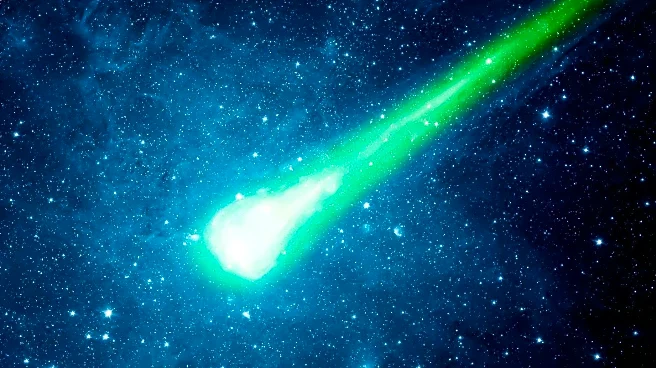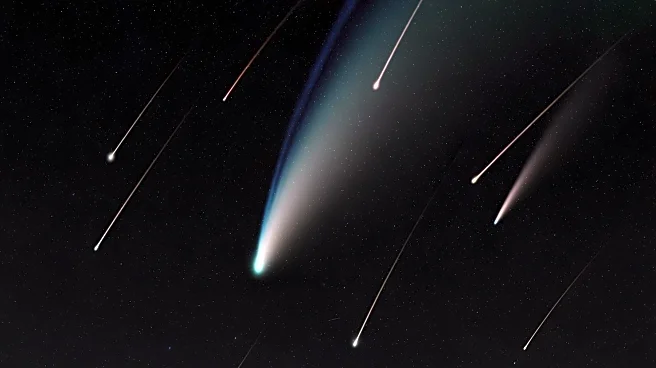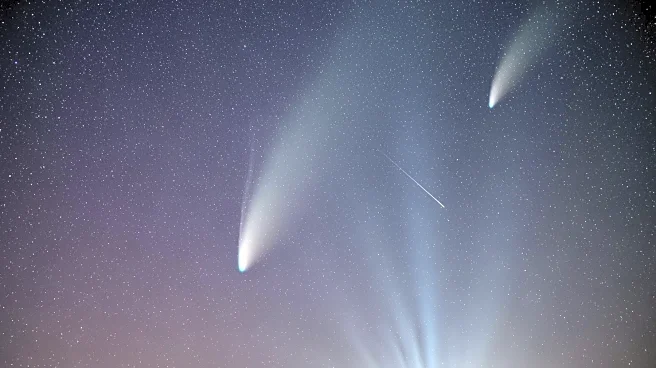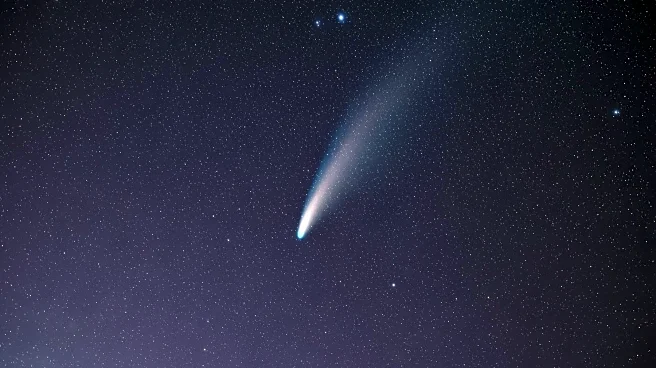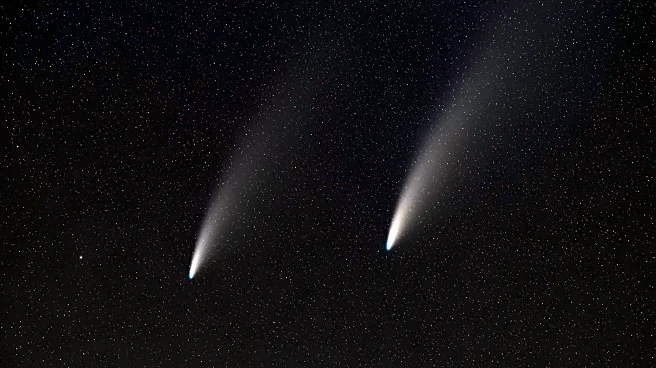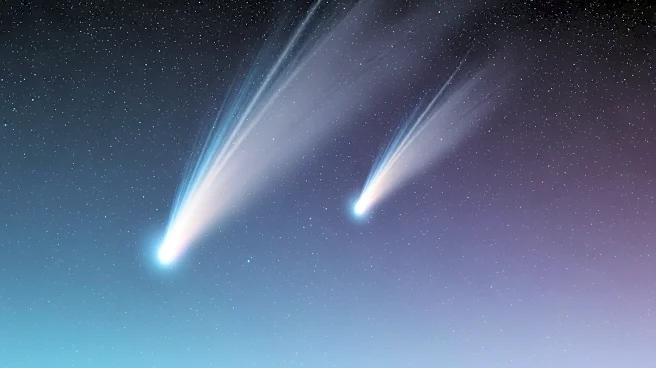What's Happening?
Two comets, Lemmon and Swan, are visible in the Arizona night sky this October. Comet Lemmon, discovered earlier this year by the Mount Lemmon Survey, is making its closest approach to Earth on October 21.
It can be seen with the naked eye under dark sky conditions, appearing as a faint greenish glow with a wispy tail. Comet Swan, although dimmer, can also be observed, particularly with binoculars. For optimal viewing, enthusiasts are advised to find a dark-sky location away from city lights approximately 90 minutes after sunset. Comet Lemmon can be located by finding the Big Dipper constellation and the bright star Arcturus, while Comet Swan is positioned below the star Altair in the constellation Aquila.
Why It's Important?
The visibility of Comet Lemmon and Comet Swan offers a unique opportunity for skywatchers and astronomy enthusiasts to witness celestial events that are not frequently observable. This event highlights the importance of dark-sky locations, which are crucial for astronomical observations free from light pollution. The appearance of these comets also coincides with the Orionid meteor shower, providing a rich experience for those interested in astronomy. Such events can inspire interest in science and space exploration, potentially influencing educational pursuits and public interest in astronomical phenomena.
What's Next?
Skywatchers can continue to observe Comet Lemmon as it reaches its closest point to the sun around November 8. The Orionid meteor shower, which occurs around the same time, will also be visible, offering additional opportunities for observation. As these events unfold, local observatories and astronomy clubs may organize viewing sessions or educational programs to engage the public. The visibility of these comets may also prompt discussions on the importance of preserving dark-sky areas to facilitate astronomical research and public enjoyment.
Beyond the Headlines
The appearance of comets in the night sky can serve as a reminder of the vastness and complexity of the universe, encouraging philosophical and scientific contemplation. It also underscores the importance of scientific research and discovery, as the Mount Lemmon Survey's identification of Comet Lemmon demonstrates the ongoing efforts to understand and catalog celestial bodies. Additionally, the event may foster community engagement and collaboration among amateur astronomers and professionals, enhancing public appreciation for science and the natural world.
